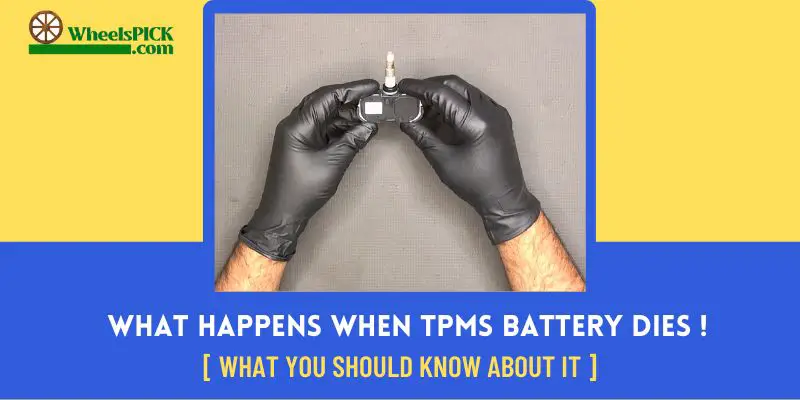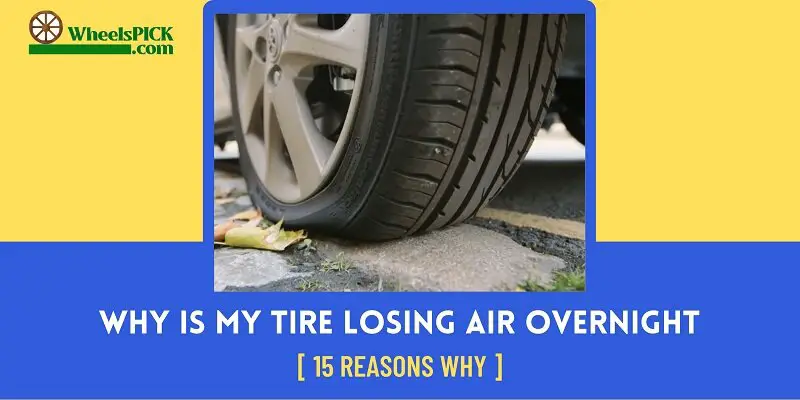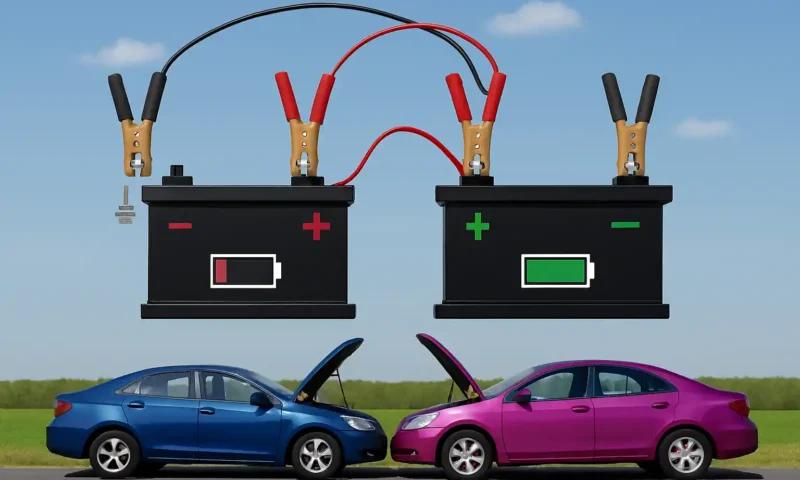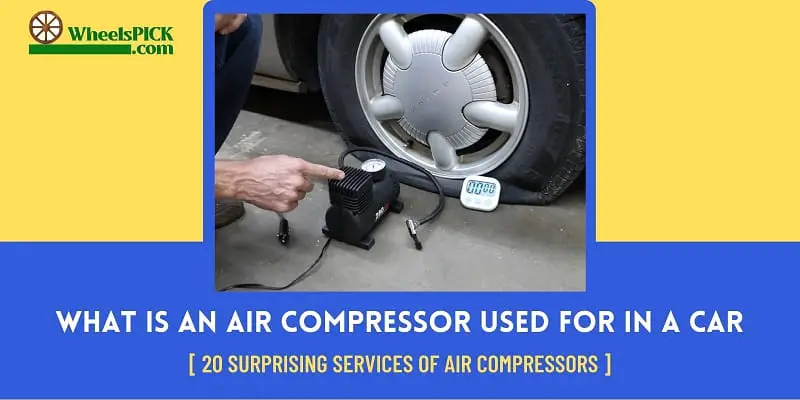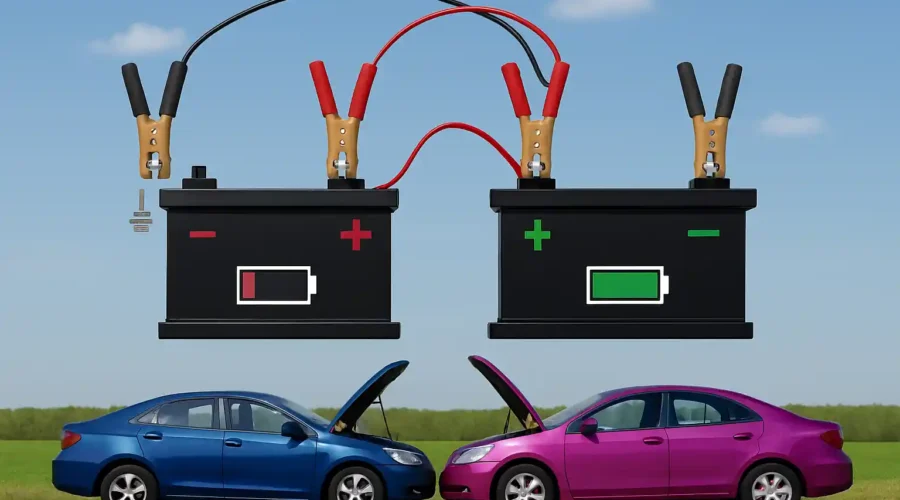TPMS (Tire Pressure Monitoring System) is a sensor installed on the rim. It alerts the driver as soon as the air pressure in the tire fluctuates. Now that you know TPMS’s purpose and importance, what happens when TPMS battery dies?
Proper tire pressure affects different aspects of driving like cornering, braking and balance. In the worst-case scenario, it can even lead to serious car accidents, and TPMS are put in place to keep you informed about the tire pressure consistently.
So, today I have tried to dig deep into the issue of TPMS battery death and discussed everything you should know about it. Without wasting any time, let’s begin.
Improve Tire Safety with the Most Recommended TPMS
No products found.
What happens if you don’t replace TPMS sensors?
The TPMS sensor is an integral part of your setup; like any other battery, it dies eventually. When the battery dies or has a low charge, it’ll have difficulty connecting the sensor with the TPMS computer. You might need to correct the pressure reading as a result. Also, the monitor will show you a warning about the impending death of the battery.
How to determine the health of your TPMS battery?
Before we move on to what happens after the TPMS battery death, it’s essential to determine whether the battery is dead. Every car has TPMS sensors, considering the battery’s lifespan is between 5 to 10 years. You are in the danger zone if your car is built before 2013. Below I have discussed a few ways to check the battery health.
-
Keep an eye on the warning blinks.
This is the most obvious way of knowing your TMS battery is dying. On the dashboard/ instrumental panel, you’ll notice a warning light blinking for about a minute every time you start your car.
That warning sign should have an exclamation mark with orange or red light. The sign can vary depending on the car model. So, if you notice any such warning, it indicates your TPMS battery is dead.
Unfortunately, this warning doesn’t have any exact measurements. The system sends it out when the battery health falls under the programmed voltage range. You might not even have a warning light if you own an older car. In that case, you need to follow the next method to check the battery.
-
Get a TPMS tool
This is the most accurate way of determining whether your TPMS battery is dead. However, as it requires a separate tool, many people don’t use this. Considering the importance of TPMS sensors, you should invest in this tool for your safety.
There are two types of TPMS tools. While one is used for reading the sensors or checking the battery, the other is used to calibrate a newly installed TPMS sensor.
The first type allows you to read and check the TPMS sensors without starting the car. This tool will show you whether you have a dead battery.
-
Use a multimeter
A mustimeter is more likely to be around you. This tool is used for various purposes, and of those purposes is testing the health of any battery.
Take the multimeter’s leads, touch them correctly to the batter’s terminal, and then check the reading. Most TPMS batteries are 3 volts; if the multimeter reads somewhere around that value, the battery should be okay.
-
Checking the manufacturing code of the TPMS battery
Removing the TPMS system to check the battery might seem like a hassle. However, if you don’t have the warning light or the diagnosis tool, this is your last shot a determining TPMS battery health.
Just remove the TPMS sensor and look for the manufacturing code stickered or stamped on the back of the battery. That should give you a reasonably clear idea about the battery’s shelf life and help you decide whether the battery should be dead.
The aftermath of TPMS battery death
Can you drive a car with a dead TPMS sensor? Drivers have different opinions on this matter. While so says, you can easily do it by manually checking the tire pressure.
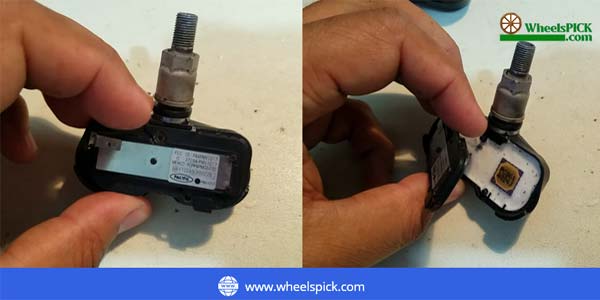
On the other hand, drivers suggest it’s safer to have around as it constantly updates you about the tire pressure. Here is some stuff that can happen when the TPMS battery and sensors stop working.
- A properly inflated tire can help you big time to consume gas efficiently. A slight change in tire pressure can affect gas consumption. As the TPMS keeps you updated about that situation, a dead battery means you won’t get that update anymore. Eventually, it can raise your gas spending.
- If your TPMS sensors aren’t working due to a dead battery, it can reduce the lifespan of your car tires. Overinflation can damage the tires when you drive over uneven surfaces. In contrast, underinflation means more contact with the surface, resulting in faster wear.
- This is the scariest thing that can happen from a dead TPMS battery. Tire pressure highly affects the driving experience and control of a car. When you don’t have an eye on the pressure, it can lead to severe accidents.
The battery, in most cases, isn’t meant to be replaced. Even if it does, there is no guarantee that the replacement will work. In that case, you can follow this video guide to replace the TPMS sensor yourself.
How to prevent TPMS batteries from dying?
Like any battery in the world, the TPMS battery dies eventually. However, there is some measure you can take so that the lifespan of your TPMS battery stays intact.
- Keep the tire pressure optimal to reduce battery and TPMS sensor stress.
- Ensure the TPMS sensor and battery is mounted correctly in the rim.
- If you have removed the sensor, remember to check the corrosion on the TPMS battery terminal.
Frequently Asked Questions (FAQ’s)
Q1. How can I tell if my TPMS battery is dead?
A) If you haven't noticed the warning blinks and your TPOMS battery is completely dead, you’ll need a TPMS diagnostic tool to detect the battery death.
Q2. How often should I replace the TPMS battery?
A) There are different types of TPMS sensors on the market with different batteries. You can expect 5 to 10 years of service from a battery, depending on your particular type. The battery longevity also depends on the distance travelled by car.
Q3. Are there any warning signs that the TPMS battery is dying?
A) TPMS Battery death indicates different depending on the car. However, you'll notice your TPMS indicator blinking in most cars, warning you about an apparent battery death.
Q4. What are the consequences of having a dead TPMS battery?
A) If you drive with a dead TPMS battery, you’ll get the TPMS monitoring light blinking every time you start. The whole point of having the TPMS sensor is to keep you informed about your car's inflation. When the battery is dead, you might get an inaccurate reading.
Q5. Can I replace the TPMS battery, or do I need to take it to a mechanic?
A) TPMS batteries aren't designed to be replaced. However, as you have to throw the whole thing, you can replace it by following this video guide. This process will require a TPMS diagnosis device and a tedious one.
Q6. Is there anything else I should do if my TPMS battery dies?
A) You should replace the whole TPMS sensor instead of trying to replace the battery. Depending on the car model, it'll only cost you around $50 to $100 for each tire. You can easily do it at home without any significant tools.
Q7. Are any risks associated with driving with a dead TPMS battery?
A) Proper tire inflation is essential for various reasons. If the tires are under-inflated, they'll wear out quickly, and you'll also have issues with braking, cornering and balancing your car. As the TPMS allows tire inflation monitor, its dead battery is a safety hazard.
Q8. How much does it cost to replace a dead TPMS battery?
A) As I said earlier, TPMS battery replacement is a tricky job. However, if you try it, you'll need a replacement battery. Most TPMS out there sues a coin battery of 3 volts. You can purchase a pack of 5 from here and use one as a replacement.
Final Words
That’s a wrap for today. After reading this article, you should know what happens when the TPMS battery dies. TPMS battery death is a widespread phenomenon, and as you have seen, detecting this issue is pretty easy too.
Once you feel like the battery is dying, you must check it and confirm whether it’s dying. If it’s approved, you can easily replace the battery following the method I have mentioned above. Considering the hassle of replacing the battery, you can also opt to change the whole TPMS sensor at an affordable cost.

